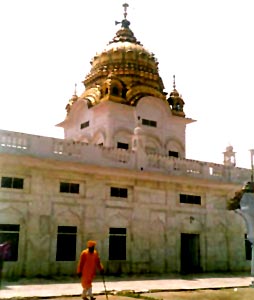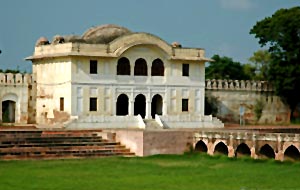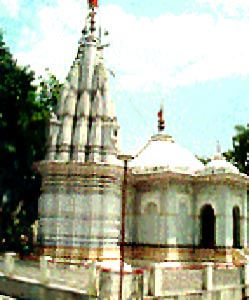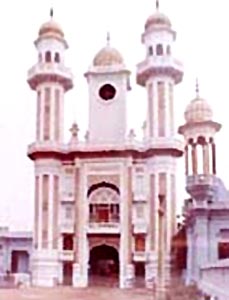punjab

PILGRIMAGE OF PUNJAB
Punjab`s largest city is Amritsar with its Golden Temple or Har Mandir Sahib, the holiest of holy Sikh shrines, and a flashpoint for religious and political conflict. Compared to other Indian cities, Amritsar is not very old. It was founded a little over 400 years ago by Guru Ram Das, the 4th of the 10 Sikh Gurus. His son and successor, the 5th guru, Arjun, raised a temple in the midst of a pool, sanctified its waters and installed the Sikhs` holy scripture, Guru Granth Sahib, in its inner sanctum. The city takes its name from the sacred pool -`amrit` (nectar) and `sar` (pool).
 In 1803, the Sikh ruler, Maharaja Ranjit Singh (1780-1839) rebuilt the temple in marble and gold. Its domes required 400kg of gold leaf to cover them. Ever since, it has been known as the Golden Temple. The Sikhs usually refer to it as the Harimandir (temple of God) or Darbar Sahib (the court of the Lord).
In 1803, the Sikh ruler, Maharaja Ranjit Singh (1780-1839) rebuilt the temple in marble and gold. Its domes required 400kg of gold leaf to cover them. Ever since, it has been known as the Golden Temple. The Sikhs usually refer to it as the Harimandir (temple of God) or Darbar Sahib (the court of the Lord).
It is well worthwhile spending an hour or two in the temple complex, listening to the hymn-singing which goes on non-stop from the early hours of the morning till late into the night and watching the thousands of pilgrims at worship.
The complex has a number of shrines of historical importance, notably the Akal Takht or the `throne of the timeless God` facing the temple where arms of the warrior gurus, their dresses and emblems can be seen and the eight-storied Baba-Atal tower.
There are many other Sikh temples in Punjab which are both historic and beautiful. On the foothills of the Himalaya is Anandpur where, in 1699, the last of the Sikh gurus, Govind Singh, baptised the first five Sikhs into the militant fraternity he called the Khalsa or the pure. Here are several temples as well as a fortress, Kesgarh. Every spring at the Holi festival (Sikhs celebrate it a day later as hola mohisha), thousands of Sikhs, notably the Nihangs, descendants of two orders of warriors, gather to indulge in displays of mock combat on horseback and on foot.
 Dera Baba Nanak is the place where Guru Nanak spent the last 12 years of his life. every year in January the Magh Fair is held here. this religious place is accessible from Gurudaspur (35 kilometers).
Dera Baba Nanak is the place where Guru Nanak spent the last 12 years of his life. every year in January the Magh Fair is held here. this religious place is accessible from Gurudaspur (35 kilometers).
Gurudwara Ber Sahib in Sultanpur Lodi is important too as it is here that that guru Nanak got enlightened. He also created Sukhmani Sahib while bathing in the River Kali Berin. This tourist place is reachable from Jalandhar and Amritsar.
At a distance of 52 kilometers from Amritsar lies Khadur Sahib is associated with Guru Angad Dev, the 2nd Sikh Guru.
Baba Bakala is important because it is here that the Guru Teg Bahadur revealed his true identity to Makhan Shah Lubana, a Sikh follower. During the festival of Raksha Bandhan a grand fair is held here.
Near the Tarn Taran district of lies the Goindwal Sahib. The 3rd Sikh Guru, Guru Amar Das, was associated with this gurudwara. The well located in the complex is an important part.
Other than these the following gurudwaras are located in Ropar Circuit. These religious places are important because this particular are has always been an important center for Sikhism for the last 80 years. the gurudwaras here are as follows:

Various other gurudwaras are scattered throughout the state of Punjab.
Besides these there are religious places belonging to the Hindu diaspora as well. one of them is Ram Tirth in Amritsar. This ancient temple dates back to the days of the Ramayana. It was sage Balmiki`s hermitage. This was the place where Luv and Kush (sons of Lord Ram and Sita) were born. As a result it is an important pilgrimage site for the Hindus.
Durgiana Mandir or Lakshmi Narain Temple at Amritsar is regarded as the Hindu counterpart of the Golden Temple. It was built in recent times.
Bhagwathi Mandir is located in Bathinda City. Dating back to the 17th century the temple is steeped in legends. A religious fair twice is ever year.
There is also a popular Shiv Mandir in Jalandhar belonging to the Lodhi Empire. The architecture of the temple differs from the usual Hindu temples as its entrance gate is built in the style of a mosque.
 The tourists can also drop in at following temples: Sodal Mandir, Jalandhar City
The tourists can also drop in at following temples: Sodal Mandir, Jalandhar City Panch Mandir, Kapurthala Town
Kali Devi Temple, Patiala
On the other hand religious places, such as, Mazaar, Pir Baba Haji Rattan in Bathinda City belongs to the Muslims. This mausoleum welcomes pilgrims of all faiths with an open arms. Sikh gurus, Guru Nanak and Guru Gobind Singh also paid visits to this place.
Other places of tourist interest in Punjab comprise of Rauza Sharif, Sirhind. It is accessible from both Patiala and Chandigarh. It is a mausoleum that belongs to Mujadid-alf-Saani Sheikh Ahmed Farooqi.
Qadian is a township that was founded by Sheikh Ahmed Qadiani in the 19th century. This place is situated en route Amritsar-Gurdaspur road. Minar-i-Qadian, Ahmediya mosque and the tomb of the founded are worth checking out.
Other Muslim religious places in Punjab include Moorish Mosque, Kapurthala City, Imam Nasir Mausoleum and Jama Masjid in Jalandhar City and Chilla Baba Seikh Farid in Faridkot City



